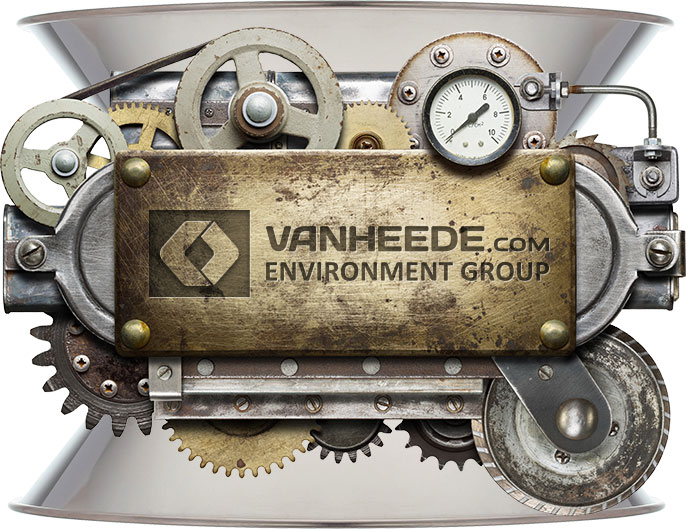Landfill
Vanheede Landfill Solutions manages and runs a landfill in Rumbeke, where our aim is to keep our environmental footprint as small as possible. We seek out the most sustainable processing techniques for each type of material we accept. Some waste materials are unsuitable for recovery and recycling, so in these cases the landfill is the only possible destination.
Landfill organisation
Our landfill is located in an extraction area for Ypresian clay. The topsoil, clay loam and clay that are extracted can be used as new raw materials without needing further processing. Clay is naturally impermeable to water, forming an additional natural barrier. Just as a factory would be, our landfill is fully PLC-monitored using Wi-Fi antennas.

Landfill organisation

Which waste streams are treated at the landfill?
Our landfill accepts category 1 (hazardous) and category 2 (non-hazardous) waste. Neither of these are suitable for recycling or other processing methods.
Category 1 includes:
- Fly ash
- Permanently contaminated soil
- Waste containing asbestos
- Non-friable waste
- Dewatered sludge
Category 2 includes:
- Non-combustible organic waste
- Permanently contaminated soil
- Recycling residues
- Inorganic, non-hazardous waste
- Organic materials contaminated with asbestos
- Dewatered sludge
- Non-recyclable inert materials
Landfill provides energy
The landfill also functions as a small but powerful energy plant. The biogas that it produces is transformed into sustainable electricity which we provide to the grid, resulting in enough power to supply the equivalent of around 3,000 households. Transforming biogas into energy releases heat, which we recover and provide to a neighbouring business that uses it to run spray-painting equipment for their agricultural machines.

Landfill becomes a natural site
We have set out our vision on sustainability in our Little Bittern Plan (Plan Woudaapje), a project in which we aim to transform our landfill into a nature reserve in the centre of Rumbeke’s Bergmolen forest once it has reached the end of its useful lifespan. The forest is still in the midst of its development, but a large section is already open to visitors. In the medium and longer term this area will become a biotope providing a safe home to rare land and water birds and other animal species.

A perfect example of these is the little bittern, the smallest bird of the heron family and a deeply reclusive species that clambers among the reeds like a monkey. The return of this threatened bird species is an unmistakeable sign that the water in the swampy biotope is of good quality and is home to specific plants and animals. Little bitterns are very discerning about environmental conditions, and so with good reason they are considered the harbingers of environmental recovery. Our ultimate goal is to see the little bittern return here.
Because the site is part of the Bergmolen forest urban nature reserve, it was a logical decision to involve the Roeselare municipal council and the Flemish nature conservancy organisation Natuurpunt in designing the landscape. Industry and nature conservancy may sound like a mutually exclusive pair, but this plan demonstrates that they can work together to find a middle way. We intend for this plan to become a model and example for both industry and government policies.

Glad to be of help!
Do you have any specific questions about a waste stream to deliver? Would you like to get a quote? Can we give you advice on your waste management? Contact us using the form and we would be delighted to help!


